M2M is the abbreviation for machine-to-machine and means that machines communicate with each other or exchange data. An M2M SIM card in turn ensures that machines and other devices have access to the internet or mobile network in order to transmit data. We provide an overview of the features and benefits of an M2M SIM card and why you should choose WhereverSIM!
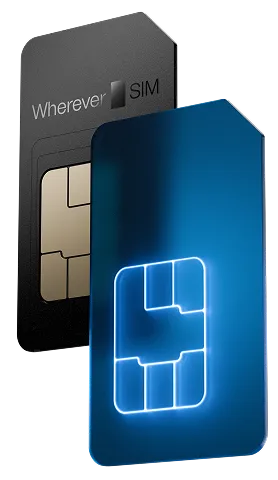
1,300+ companies worldwide rely on WhereverSIM


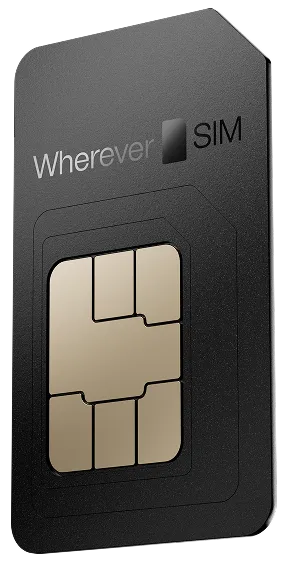
If you want to buy a reliable M2M SIM card, WhereverSIM is the right place for you: Our M2M SIM cards automatically connect to the best available local network - worldwide in over 190 countries and 485+ mobile networks.
Unlike with conventional SIMs, you retain full control over your data consumption at all times, activate SIMs flexibly in the customer portal and use tariffs that are tailored precisely to your IoT or M2M project - from individual devices to large-scale rollouts.

Unlike conventional network operators, WhereverSIM provides you with a network-independent solution. Our M2M SIMs work in devices of all kinds - from alarm systems to industrial control units - and deliver maximum availability thanks to national roaming and global coverage.
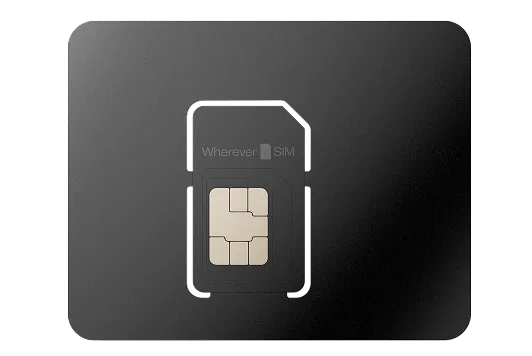
Access to any mobile network in the EU via national roaming, e.g. to the networks of providers like Orange, Vodafone & BT.
Always access to the strongest mobile network at the location as standard - steered roaming on request.
>485 networks in 189+ countries for your M2M project. You can also use networks in neighboring countries near the border.
NB-IoT and LTE-M are particularly suitable for devices that need to save power or are difficult to reach behind walls. Many network operators around the world already support this technology and the number is growing every week. Please contact us for more details.
As standard, our M2M SIM cards support data transmissions and SMS, voice calls on request.
An M2M SIM card is a SIM card that enables devices such as alarm systems, vending machines, trucks and many others to establish a connection to the mobile network and transmit data via it.
99,99 % availability through complete geo-redundancy of our data centers and a state-of-the-art architecture based on microservices.
Restrict the use of a SIM card to a specific device based on the IMEI (unique identification number of a mobile phone device).
Double protection when logging into the online portal: 2-factor authentication protects your data in the WhereverSIM portal against unauthorized access.
The M2M SIM is to be understood as a kind of instruction manual for the end device, in which it receives all the information it needs to establish the Internet connection. Accordingly, it is important that the end device is technically capable of processing the information provided by the M2M SIM. Successful IoT communication therefore requires both - a reliable M2M SIM card and an intelligent end device.
Strictly speaking, there is no difference between an M2M and an IoT SIM card. The two terms are often used interchangeably, even though IoT and M2M themselves do not actually mean the same thing.
Since M2M and IoT SIM cards are both technically SIM cards that provide information for connection to the mobile network, the difference between IoT and M2M is irrelevant for use. The devices in which M2M and IoT SIM cards are used are enabled by the SIMs to transmit and receive data. So if you are actually looking for an M2M SIM card, you can also use IoT SIM cards.

Whether mini (2FF), micro (3FF), nano (4FF) or embedded (MFF2): Our SIMs are available in all formats - also as a particularly robust industrial SIM with a long service life, over 1 million write cycles and 15 years of data retention.
On request, we can provide you with your own private IP subnet (a private APN). Access to the IoT SIM cards is therefore only possible via a secure IPsec VPN connection and is protected from third parties.
On request, we also offer you the option of using a static private IP address for the M2M SIM to easily access the SIM and device via a secure VPN. For secure and simple remote access, we also offer VPN on request.
In order to meet the different requirements of end devices and machines, SIM formats have been and are constantly being developed further. To ensure that the SIM cards themselves take up as little space as possible, the size has been significantly reduced, leaving more room for other components if required.
A basic distinction is made between the mini, micro and nano SIM card formats. There are also embedded SIMs, which are soldered directly into the modem as a chip.
In addition to the standard version, the different formats are also available as "Industrial SIM". This more robust variant is designed for an extended temperature range and a longer service life, for example.

-25°C to +85°C
500.000
10 years
-40°C to +105°C
1.000.000
10 years at -40°C to +105°C
15 years at -25°C to +85°C
2FF, 3FF, 4FF
2FF, 3FF, MFF2
M2M SIMs have information and, if you like, "access keys" so that end devices can use a variety of mobile networks from different network operators both nationally and internationally(national roaming). This means they enable a connection for IoT and M2M projects almost everywhere.
Conventional SIM cards, especially in Germany, usually only provide the information for network usage of the SIM-issuing network operator, i.e. the provider with whom the mobile phone contract was concluded. However, the availability of this one network varies depending on the location: sometimes there is good reception, sometimes there is none at all.
To avoid connection interruptions in IoT and M2M projects as far as possible, M2M SIM cards also enable the use of different network operators in Germany (e.g. Telekom, Vodafone and O2 in Germany). M2M SIM cards are therefore also referred to as multi-network SIMs or roaming SIMs.

M2M SIM cards are connected to a platform for easier management. Both the SIM cards and the associated endpoints are configured via this platform. For example, service profiles can be set up for M2M SIMs, SIM cards can be activated and deactivated or mobile networks can be excluded for use(blacklisting).
Comprehensive monitoring is also possible via such portals. Users can see the status of the end device, whether and to which network the SIM card is connected and how much data it is transmitting. In the event of a problem, various diagnostic functions such as a remote reset of the SIM card can help.
At WhereverSIM, we offer a clear online portal and a comprehensive API for easier management of M2M SIM cards, which can be used to transfer the data from our portal to your own systems.
In addition to technical performance, the online portal is an important tool for monitoring SIM cards against misuse, improper use or unexpectedly high costs.
Costs can be monitored using various configuration options. The configuration of permitted networks and countries ensures that end devices only connect in accordance with the booked tariffs. Additional data limits and notifications prevent excess data consumption (overconsumption/overuse) or at least provide information in good time so that further decisions can be made. However, once a data limit has been set and reached, the device cannot transfer any more data unless the limit is suspended. This is not an option for some use cases, as a permanent connection of the device is required. In these cases, data pools are often used: The possible additional consumption of an M2M SIM is offset by the lower consumption of other SIMs in the pool.
Misuse and misappropriation of the SIM card can be prevented by IMEI lock. This function prohibits the use of the SIM in an end device other than the one assigned to it in the portal. This lock can only be removed via the portal. So if a SIM with IMEI lock is stolen from a device, this M2M SIM is useless in other end devices.
Security is essential for M2M communication. This is why mobile network providers already separate M2M connections from the rest of the data traffic in their core network. This is made possible by so-called APNs. These are private access points to the network. This APN must be entered once for the SIM so that it can enable the connection to networks in the first place. If the data traffic between the end device and the system is to be additionally protected, VPNs can also be used.
Unlike conventional data tariffs, M2M plans have to cover a significantly larger bandwidth: The fluctuations in data requirements can be just a few kilobytes or several gigabytes, depending on the application. For this reason, there are a variety of different tariff offers and billing models specifically for M2M projects.
For example, the aforementioned data pooling. In this constellation, all active M2M SIMs use a shared data quota in which lower consumption by SIM cards compensates for higher data consumption by individual SIMs.
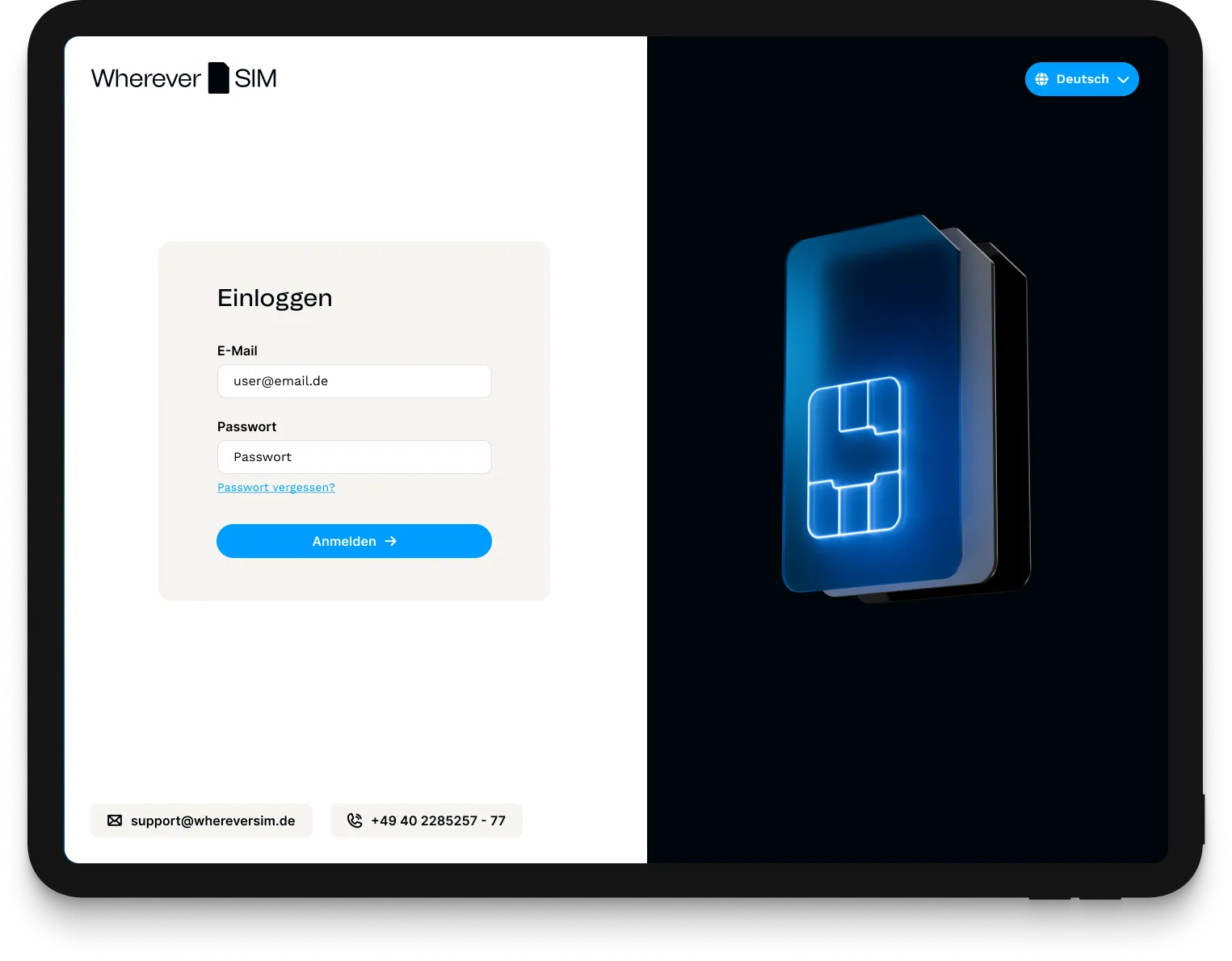
Our M2M SIM cards are not restricted to one network operator, but can also connect to different mobile networks within a country (national roaming). The end device itself checks the available networks and connects to the best network depending on the signal strength. This means that your devices remain flexible and practically always have a stable connection.
Our M2M SIMs have access to a global network of roaming partners. This means that your devices can connect to us in over 485 mobile networks in more than 190 countries. Because the SIMs are not tied to one provider, your device chooses the best network itself - for maximum coverage and reliability.
Yes, our M2M SIM is designed to use different networks, but it can also only use a specific network if it is supported by the hardware. The network can be configured manually on most end devices. By default, our M2M SIM is designed to enable your device to connect to the strongest mobile network at any location.
Yes, you can define individual data limits for each SIM card. If the data volume is exceeded, the card can be automatically deactivated, throttled or monitored via an alarm message - depending on which option you prefer. This gives you full cost control and prevents unwanted excess consumption.
No, our M2M SIM cards are already compatible with all common network standards - from 2G to 3G, 4G (LTE), LTE-M through to NB-IoT and 5G. A physical exchange is not necessary, provided your device supports the desired network technology and this is activated in your tariff.
Our M2M SIM cards are designed for pure data communication as standard. However, voice services can be activated on request - for special applications in industry or the security sector, for example.
Our industrial-grade SIM cards are designed for long-term use. Depending on the form factor and operating conditions, they can be operated for up to 10 years or longer without any problems - ideal for long-lasting devices and projects that require no maintenance.
Our minimum purchase quantity is 25 SIMs - but we will be happy to find flexible solutions with you if your IoT project has other requirements. We tailor our tariffs to you: many can be terminated on a monthly basis or can be individually adapted to your project duration.
With our WhereverSIM portal, you have full transparency at all times: you manage your cards centrally, monitor data volumes, set limits, activate or deactivate cards in real time and receive notifications for certain events - which can also be integrated via API.
Naturally. We will be happy to provide you with a tailor-made offer based on your project size, requirements and desired network technologies. Simply use our contact form or give us a call.
